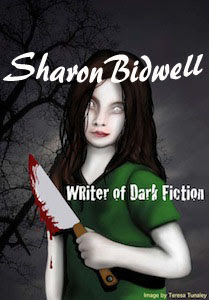First, an explanation.
A writer who is a ‘plotter’ plans out the course of the story, spends time thinking about the plot, theme, subtext, characterisation, and many other elements ‘before writing’.
A ‘pantser’ sits down at the keyboard with an idea or a model (these are two different things I won’t explain here except to say one is more fully-fledged than the other) and begins to write. ‘Pantsing’ is to ‘fly by the seat of’ (one’s pants), though I prefer to call it organic writing.
I’m (mostly) a pantser, which I’ve come to realise doesn’t mean I don’t plot but having read a reference to Stephen King recently, a proverbial lightbulb went off in my head illuminating the fact that, like King, I’m an intuitive plotter. I am NOT for the record stating at this point in time I do it as well as he does, but here’s hoping one day, preferably soon. Really, that’s the definition of (successful) pantsers -- they are intuitive plotters.
Yes, I am able to face the blank page and craft a story with nothing more than a vague idea in mind. I tend to write from beginning to end. I seldom jump around. The story comes to me as if I am reading, and in that respect it appears I’m lucky the way King is fortuitous. We are able to ‘pants’ it. The same cannot be said of every writer, though it doesn’t diminish the effort required, and a simple but painful truth remains: sometimes planning isn’t a bad idea even for pantsers. A story may not work for many reasons. Vital elements may be missing. Or be in the wrong order. Even a good book may benefit from being looked over to check all the important formations of story-telling are present and/or in the right place.
I imagine most writers start out as pantsers, unless they have some form of professional writing background. The majority of writers are readers who range from someone ‘wanting to have a go’ to those who have always dreamed of it being a vocation. Some (the lucky few) will discover they are intuitive, their writing tends to be organic, and they write something good enough to capture a publisher’s interest. Those who aren’t intuitive likely never publish anything, or nothing well-received.
Stories have patterns. Don’t worry if you didn’t realise this. If you’re a reader, you shouldn’t. I was ‘just’ a reader once, though there’s no such thing as ‘just a reader’ to those who love books, who buy them or produce them. A reader should enjoy a book without seeing its framework. The reader isn’t supposed to know the design is there.
Pantsers start writing and either give up or get nowhere (I throw my hands up and confess there are always the often-dreaded exceptions) because they don’t realise this, or they are intuitive and form the shape without realising. Once pantsers become published authors, they may or may not perceive the hidden construction of stories. Some will continue to be intuitive without thinking about it, while some (of which I am one) will begin to spot these layouts.
A note of warning: IMHO recognition of these designs ‘may’ spoil the simple enjoyment of reading somewhat (at least for me). As an author I now read a book more aware of the narrative. I’m able to spot the ‘inciting incident’ (for example). Don’t worry if as a reader you don’t know what that is, but writers should understand. For me, books were more enjoyable when these plot points were ‘invisible’ because as a reader my mind wasn’t tuned in to spot them.
Plotters know stories require an arrangement and they set out to make the task easier for themselves by laying the groundwork beforehand.
To a pantser plotting feels like studying for an exam. A plotter to a pantser can seem like one of those irritating kids in school who enjoyed the study process. Ironically, I was one of those who didn’t overly mind studying -- good thing because as a writer there are times when I need to do research.
The trouble is, depending on what level of intuitive grasp the writer has of the subject, the pantser can be the one looking wistfully back, wishing they had spent the hours pouring over the text books in order to obtain a better result, but I’m not advocating either option.
Which is better? This is a simple question with an easy answer: use the one that works for you. Some writers plot, some pants, and some do a mixture of the two, and what’s required can differ from work to work, genre to genre, project to project. The choice often comes down to which the writer finds easier, more natural, or even which he or she can withstand. For some pantsers, plotting can seem torturous. For some plotters, pantsing must seem bewildering and disastrous.

No comments:
Post a Comment